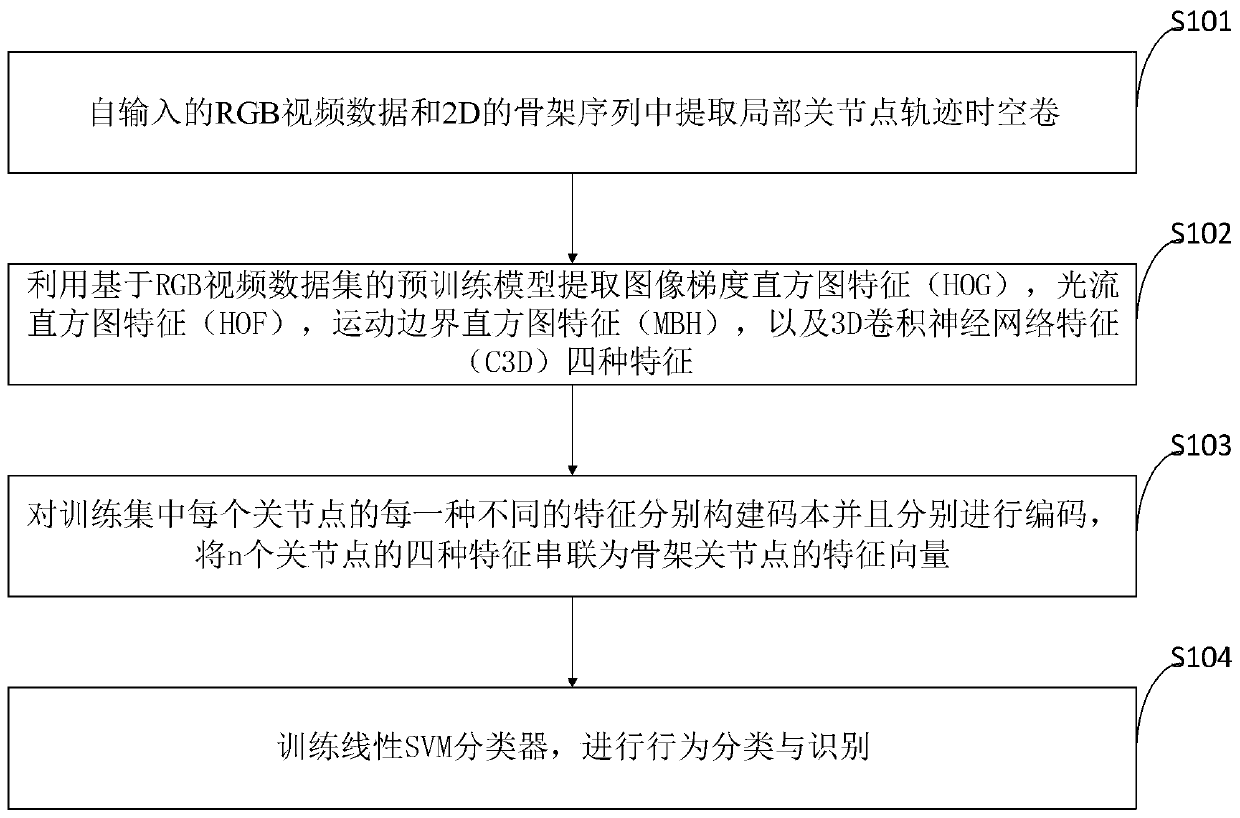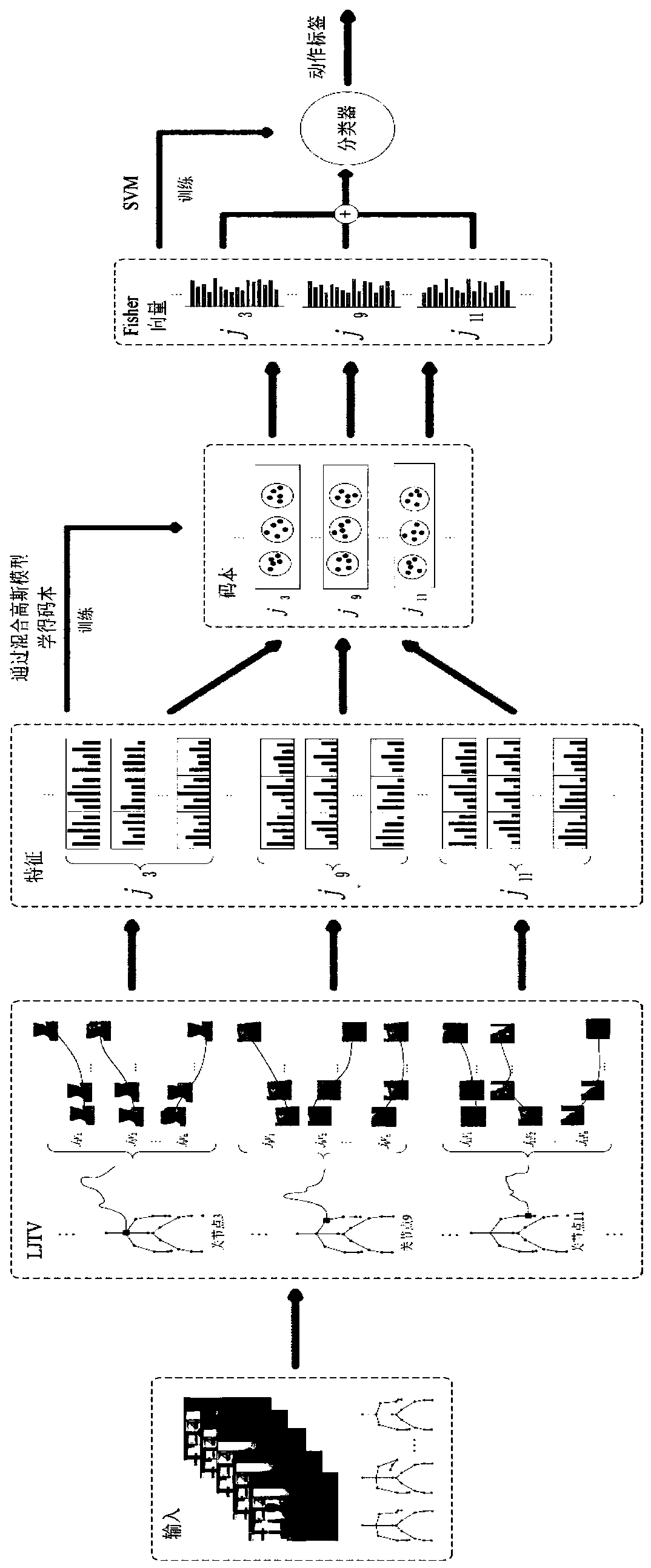Behavior identification method based on local joint point track space-time volume in skeleton sequence
A recognition method and joint point technology, applied in character and pattern recognition, computer parts, instruments, etc., can solve the problems of trajectory redundancy, difficult time information, difficult to apply to real scenes, etc., and achieve low cost and high precision. Effect
- Summary
- Abstract
- Description
- Claims
- Application Information
AI Technical Summary
Problems solved by technology
Method used
Image
Examples
Embodiment 1
[0118] The present invention uses RGB video data and 2D human skeleton data for behavior recognition. The method flow proposed by the present invention follows the classic behavior recognition flow based on local features: detection of spatiotemporal interest points, feature extraction, construction of bag-of-words model, and classification. Specifically, it is divided into four steps: extracting local joint point trajectory space-time volume (LJTV), feature extraction, feature encoding, and behavior classification. Schematic as figure 2 As shown, each step is described in detail below:
[0119] Step 1, extract the space-time volume of local joint point trajectories:
[0120] The human skeleton contains 15-25 joint points, and different data have different joint point quantities, but the algorithm of the present invention is not restricted by the joint point quantity.
[0121] The present invention takes the human skeleton with 20 joint points as an example, the structure ...
PUM
 Login to View More
Login to View More Abstract
Description
Claims
Application Information
 Login to View More
Login to View More - R&D
- Intellectual Property
- Life Sciences
- Materials
- Tech Scout
- Unparalleled Data Quality
- Higher Quality Content
- 60% Fewer Hallucinations
Browse by: Latest US Patents, China's latest patents, Technical Efficacy Thesaurus, Application Domain, Technology Topic, Popular Technical Reports.
© 2025 PatSnap. All rights reserved.Legal|Privacy policy|Modern Slavery Act Transparency Statement|Sitemap|About US| Contact US: help@patsnap.com



